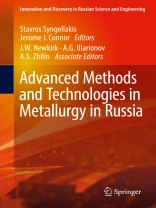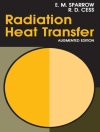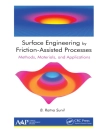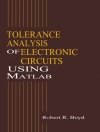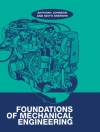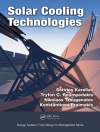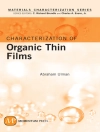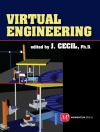The book provides a comprehensive overview of the most recent and advanced work on metallurgy sciences and technologies–including material characterization of complicated alloys, heat and surface treatment, ferrous metals metallurgy, and energy savings in pyrometallurgy–in the important Ural industrial region of Russia. Until recently, research into scientific and engineering problems within Russia developed along different lines than those in Europe and North America, but nevertheless resulted in remarkable achievements utilizing different tools and methodologies than those used in the West. Many of these achievements – particularly in metallurgy – were made in the Urals.
विषयसूची
Part 1: Material characterization of complicated alloys.- Effect of microalloying on the structure and phase composition of near-b-titanium alloy
.- Microstructural aspects of high-strength maraging steels fracture toughness enhancement
.- The precipitation of silicide particles in heat-resistant titanium alloys
.- Structure formation and thermal expansion analysis of 0.6% carbon containing invar alloy crystallized at different cooling rates
.- Effect of the structural state of high-nitrogen Cr-Mn-Mo-steel on mechanical and magnetic properties
.- The structural and magnetic properties of the amorphous and nanocrystalline alloys
.- Part 2: Heat and surface treatment
.- The gradient complex protective coatings for single crystal nickel alloys
.- Cooling capacity of jet spraying devices for large steel parts heat treatment
.- Heat treatment technology adjustment using experimental and simulation methods.- The relationship of pitting potential to chemical composition of steels alloyed with nitrogen.- The formation of eutectic phases at the crystallization of high-manganese steel.- Part 3: Ferrous metals metallurgy
.- Complex metallurgical estimation of manganese raw materials.- Production of manganese ferroalloys from Russian manganese ores.- Waste generation and recycling in the ferroalloy industry.- Influence of impurities on formation of iron-carbon melt.- Advantages and risks of blast furnace operation at increased pressure.- Part 4: Energy savings in pyrometallurgy
.- Mathematical model and software for the control of commissioning complex energy-intensive units in metallurgy.- Information modeling system for blast furnace smelting control.- Computer system for production control of a blast furnace.- Improvement of the energy efficiency of hot blast stove performance.- Carbon dioxide emissions on an example of metallurgical technologies.- Principles of selection of new technology and risk assessment:a case study for the selection of ironmaking process technology.- Development of techniques for the characterization of thermophysical properties of iron materials with internal heat sources.- Index.
लेखक के बारे में
Dr. Stavros Syngellakis is Adjunct Professor of Materials and Structures at the Wessex Institute of Technology, Ashurst, Southampton, UK.
He holds a Diploma in Civil Engineering from the National Technical University of Athens, Greece and a Ph D from Princeton University, USA. He is also a senior lecturer in the School of Engineering Sciences and a member of the Computational Engineering and Design research group at the University of Southampton.
Dr. Jerome J. Connor is Professor Emeritus of Civil Engineering at Massachusetts Institute of Technology. His research interests include computational mechanics, structural analysis, motion based structural design, and novel design methodologies for structural systems and has taught courses in computational mechanics and structural engineering. In recent years Connor’s work has involved motion based design and damage assessment of engineering materials and he is directing a number of projects related to theapplications of structural control to large civil structures as well as investigating methods to quantify damage in engineering materials.
